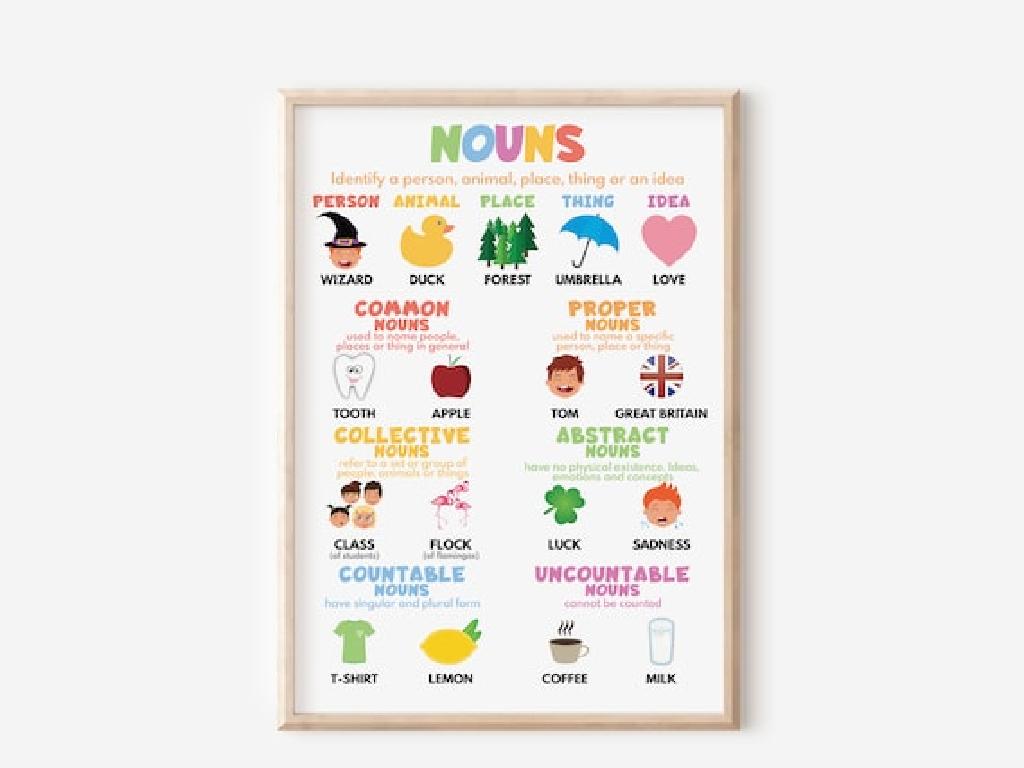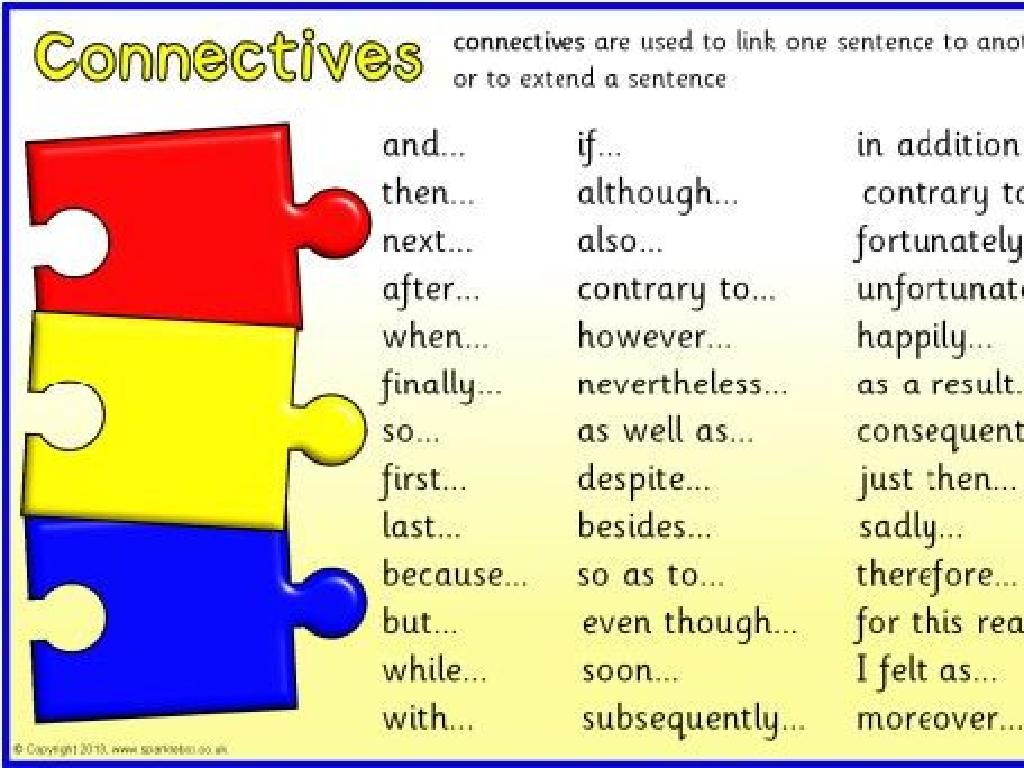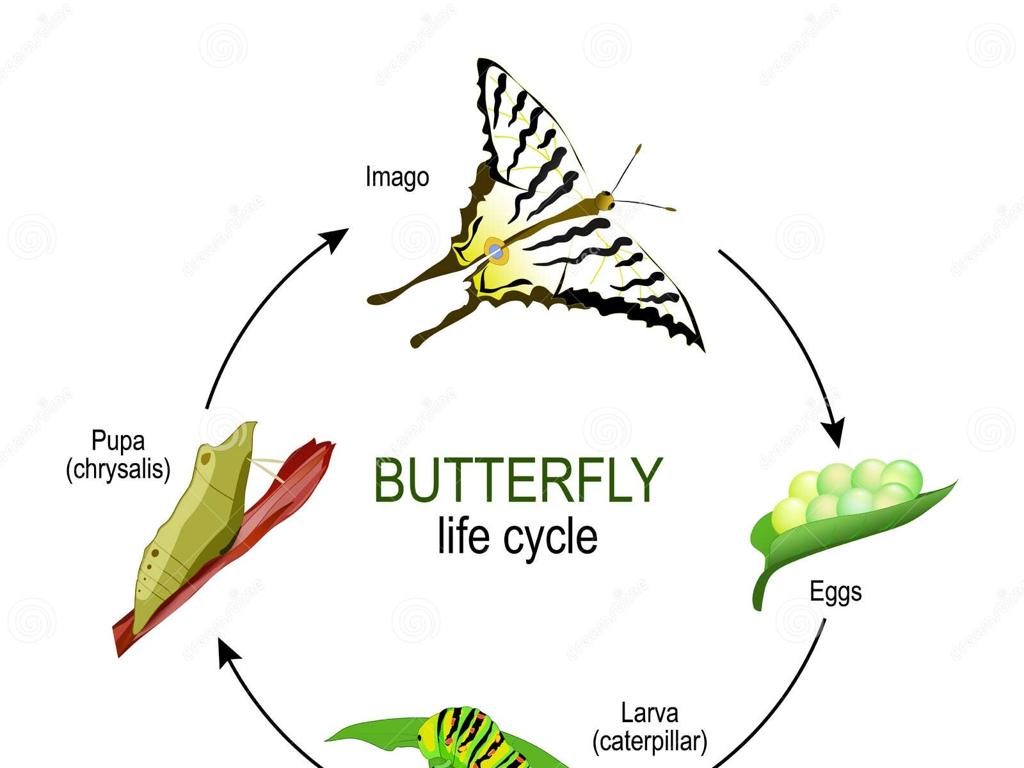Form The Perfect Verb Tenses
Subject: Language arts
Grade: Eighth grade
Topic: Verb Tense And Mood
Please LOG IN to download the presentation. Access is available to registered users only.
View More Content
Mastering Perfect Verb Tenses
– Understanding verb tenses
Verb tenses indicate the time of action or state of being.
– Significance of verb tenses
Using correct verb tenses makes writing clear and coherent.
– Introduction to perfect tenses
Perfect tenses show completed actions in relation to other events.
– Exploring perfect verb forms
We’ll learn how to form past, present, and future perfect tenses.
|
This slide introduces the concept of verb tenses and their importance in writing. Start by explaining that verb tenses help readers understand when actions happen. Emphasize that using the correct tense is crucial for clear communication. Introduce the perfect tenses as a way to express actions that are complete at a certain point in time. Provide examples of each perfect tense: past perfect (I had walked), present perfect (I have walked), and future perfect (I will have walked). Explain that today’s lesson will focus on forming and using these tenses correctly. Encourage students to think of examples from their reading or writing where different tenses change the meaning of a sentence.
Mastering Perfect Verb Tenses
– Define verb tenses
– Verb tenses indicate time of action or state of being
– Role of tenses in sentences
– Tenses set the time frame and relate events accurately
– Examples: past, present, future
– Past: I walked, Present: I walk, Future: I will walk
– Forming perfect tenses
– Combine have/has/had with the past participle of the verb
|
This slide introduces the concept of verb tenses, which are crucial for indicating when an action or state of being occurs. Understanding verb tenses helps students express time in their writing and speaking accurately. Start with definitions and then explain the role of tenses in constructing sentences. Provide clear examples of simple past, present, and future tenses to illustrate basic tense formation. Then, guide students on forming perfect tenses, which represent completed actions or states. Use examples like ‘I have walked,’ ‘I had walked,’ and ‘I will have walked’ to demonstrate the perfect tenses. Encourage students to create their own sentences using each tense to reinforce their understanding.
Perfect Tenses Introduction
– ‘Perfect’ in grammar explained
– ‘Perfect’ refers to completed actions or conditions
– How to form perfect tenses
– Use ‘have’ or ‘has’ with the past participle
– Time in perfect tenses
– Relates past, present, future to a point in time
– Examples of perfect tenses
– ‘I have eaten’ (present perfect), ‘I had eaten’ (past perfect)
|
This slide introduces the concept of perfect tenses in grammar, which are used to describe actions that are completed at a certain point in time. The term ‘perfect’ is a grammatical term indicating that the action is considered complete. To form the perfect tenses, students should learn to use ‘have’ or ‘has’ followed by the past participle of the verb. It’s crucial to understand how time is expressed in perfect tenses, as they link the time of the action to the present, past, or future. Provide examples for each perfect tense and encourage students to create their own sentences to grasp the concept better.
Mastering the Past Perfect Tense
– When to use past perfect tense
– Used for an action completed before another past action
– How to form past perfect tense
– Combine ‘had’ with the past participle of the verb
– Examples of past perfect tense
– ‘She had finished her homework before dinner.’
– Practice with past perfect sentences
– Create sentences using past perfect for past events
|
The past perfect tense is used to express actions that were completed before another action in the past. It’s formed by using ‘had’ followed by the past participle of the verb. For example, ‘She had finished her homework before dinner.’ This indicates that the homework was completed at some point in the past before dinner. Provide students with additional examples and encourage them to form sentences using the past perfect tense to describe events that have been completed in the past. This practice will help them understand the sequence of events and the use of the past perfect tense in writing and speaking.
Mastering Present Perfect Tense
– When to use present perfect
– Use for actions completed at an unspecified time or that have relevance to the present.
– How to form present perfect
– Combine ‘have/has’ with the past participle of the verb.
– Examples of present perfect
– ‘I have eaten’, ‘She has traveled’
– Practice with sentences
– Create sentences using new verbs in present perfect.
|
The present perfect tense is used to describe actions that were completed at an unspecified time in the past or that affect the present. It’s formed with the auxiliary verb ‘have’ or ‘has’ followed by the past participle of the main verb. For example, ‘I have eaten’ or ‘She has traveled’. In class, provide students with a list of verbs to convert into the present perfect tense and create their own example sentences. This practice will help them understand the formation and use of the tense in various contexts. Encourage students to think about actions they’ve completed recently to come up with sentences that are relevant to their experiences.
Mastering Future Perfect Tense
– When to use future perfect tense
– Use it to describe an action that will be completed before another future event.
– How to form future perfect tense
– Combine ‘will have’ with the past participle of the verb.
– Examples of future perfect tense
– ‘By next year, I will have graduated.’
– Practice with future perfect tense
– Write sentences imagining future accomplishments.
|
The future perfect tense is used to discuss actions that will be completed before some point in the future. It’s formed with ‘will have’ followed by the past participle of the verb. For example, ‘She will have finished the project by next Thursday.’ Provide students with clear examples and create practice sentences together. Encourage them to think of personal goals or upcoming events and how they might describe these situations using the future perfect tense. This will help them grasp the concept through relatable scenarios and reinforce their understanding of verb tenses.
Perfect Tenses in Literature
– Identify perfect tenses in texts
– Look for had, have, or has followed by a past participle
– Understand author’s tense choice
– Reflect on how the tense affects the story’s timeline
– Activity: Analyze a literary piece
– Find perfect tense verbs in an excerpt and discuss their effect
|
This slide aims to deepen students’ understanding of perfect tenses and their application in literature. Start by explaining how to identify perfect tenses, focusing on the auxiliary verbs ‘had,’ ‘have,’ or ‘has’ followed by a past participle. Discuss why an author might choose a particular tense and its impact on the narrative. For the activity, provide students with a literary excerpt and guide them to highlight the perfect tenses. Encourage a class discussion on how these tenses influence the reader’s perception of time and events in the story. This exercise will help students recognize the importance of verb tenses in storytelling and enhance their analytical skills.
Practice Makes Perfect: Perfect Tenses
– Engage in group activity
– Create sentences with perfect tenses
– Use past, present, and future perfect tenses
– Share your sentences
– Discuss the usage in class
– Explain why a specific tense was used
|
This slide introduces an interactive group activity aimed at practicing the perfect verb tenses. Divide the class into small groups and assign each group to create sentences using the past perfect, present perfect, and future perfect tenses. Encourage creativity and the use of different subjects and verbs. After the groups have created their sentences, have them share with the class. Facilitate a discussion on why certain tenses were chosen and how they affect the meaning of the sentences. This activity will help students understand the application of perfect tenses in various contexts and enhance their grasp of verb tense and mood. Possible variations of the activity could include creating a short story using all three perfect tenses or identifying and correcting improperly used tenses in given sentences.
Class Activity: Perfect Tense Challenge
– Pair up and write a short story
– Include all three perfect tenses
– Past Perfect, Present Perfect, Future Perfect
– Present your story to the class
|
In this engaging class activity, students will work in pairs to create a short story that incorporates all three perfect tenses: past perfect, present perfect, and future perfect. This exercise will help students understand how each tense is used to indicate completed actions at different times. As a teacher, facilitate the pairing, provide examples of each perfect tense, and guide students on how to integrate them into their storytelling. After writing, each pair will present their story to the class, allowing for peer learning and feedback. Possible variations of the activity could include writing from different perspectives, using different genres, or incorporating vocabulary words from a recent lesson.
Perfect Verb Tenses: Conclusion & Homework
– Recap perfect verb tenses
– Review past, present, and future perfect tenses
– Emphasize the importance of practice
– Regular practice solidifies understanding
– Homework: Diary entry with perfect tenses
– Use past, present, and future perfect tenses in a creative diary entry
|
As we conclude, remind students of the three perfect tenses: past perfect, present perfect, and future perfect. Emphasize how each tense is used to show completed actions at different times. Stress the importance of practicing these tenses to fully grasp their usage. For homework, students will write a diary entry that incorporates all three perfect tenses, allowing them to apply what they’ve learned creatively. This exercise will help students recognize and form perfect tenses in a context they can relate to, enhancing their grasp of the concept.






